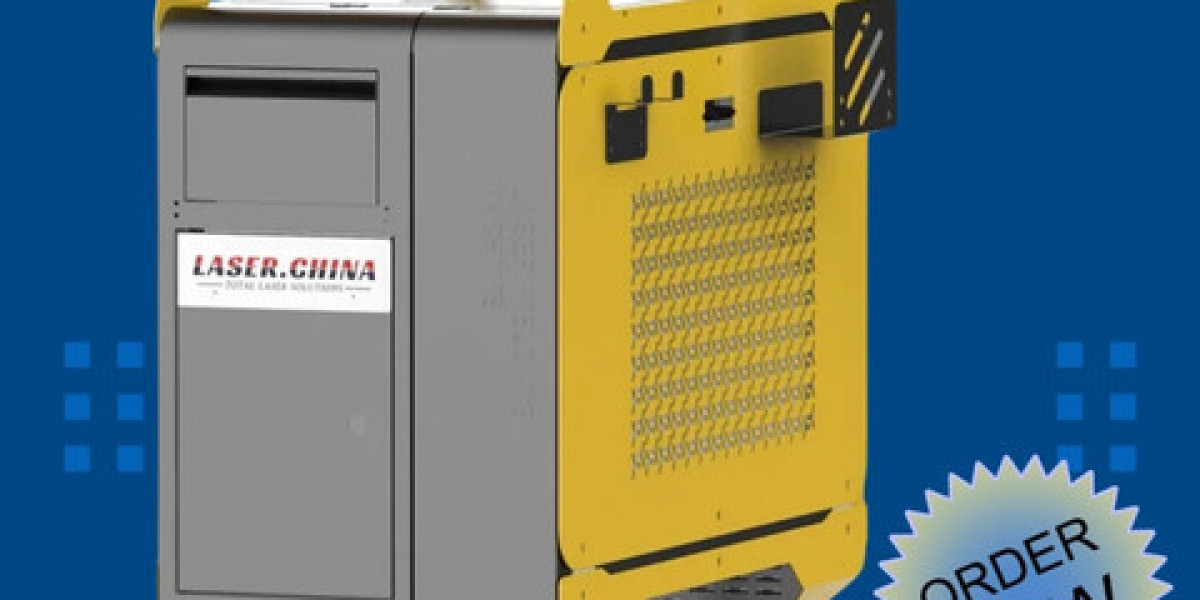A laser paint remover uses focused laser energy to vaporize paint, rust, and contaminants from surfaces in a controlled manner. Unlike abrasive blasting or chemical stripping, laser cleaning requires no consumables, no chemical waste, and minimal operator intervention. The laser beam interacts with the paint layer, heating it until it evaporates or peels away, leaving behind a clean and residue-free surface ready for further processing or finishing.
Understanding How a Laser Paint Remover Works
The working principle of a laser paint remover is based on the concept of laser ablation. The laser emits a high-energy beam that targets the upper coating layers of a material. The laser energy is absorbed by the paint or oxide layer, causing rapid expansion and vaporization. Since the laser parameters — such as wavelength, pulse duration, and energy density — are precisely controlled, the base material remains unaffected.
For example, when cleaning an aluminum aircraft panel or a steel automotive frame, the laser removes only the paint or corrosion layer, keeping the substrate intact. This level of control is especially critical in applications where maintaining surface integrity and dimensional accuracy is essential.
A laser paint remover can be configured for handheld operation or integrated into automated robotic systems. The choice depends on the scale and complexity of the application. Handheld units are ideal for small components and spot cleaning, while robotic systems excel in high-volume industrial processes that require repeatable precision.
Industrial Applications of Laser Paint Remover
The laser paint remover is versatile and finds extensive use across several industries due to its non-contact and environmentally clean process.
Automotive Industry:
Laser systems are used to remove old coatings, primers, and rust from car frames, engine parts, and molds before repainting or welding. This ensures a pure surface for improved coating adhesion and structural quality.Aerospace Industry:
Aircraft maintenance often requires the removal of multiple paint layers from aluminum or composite panels. Laser paint removal eliminates the risk of damaging lightweight materials, unlike traditional chemical strippers that can cause corrosion or residue contamination.Shipbuilding and Marine Maintenance:
Ships and marine equipment often face corrosion and paint degradation due to constant exposure to saltwater environments. Laser paint removers are used to clean hulls, decks, and mechanical components efficiently, reducing downtime during dry-dock maintenance.Energy and Power Plants:
In power generation, equipment such as turbines, pipes, and pressure vessels require periodic cleaning to maintain performance. Laser systems can remove paint and coatings without introducing moisture or chemicals, which could otherwise affect operational reliability.Cultural Heritage Restoration:
The controlled nature of laser cleaning also makes it valuable for conservation. Historical artifacts, sculptures, and buildings can be cleaned of unwanted paint or pollution deposits without mechanical abrasion.
Environmental and Economic Impact
A major factor driving the adoption of laser paint remover technology is its environmental advantage. Traditional paint removal methods rely on sandblasting, chemical stripping, or mechanical grinding — all of which generate waste, dust, or toxic fumes. In contrast, laser cleaning produces no chemical waste and requires only electrical energy.
The ablated material is usually collected through an integrated vacuum system, keeping the workspace clean and compliant with occupational safety standards. The absence of consumables like sand, solvents, or acids also means fewer logistics and disposal costs. Over time, the operational efficiency and low maintenance of laser systems lead to substantial cost savings for manufacturers and maintenance teams alike.
From a sustainability perspective, laser cleaning aligns with the global shift toward greener manufacturing practices. As industries seek ways to reduce emissions, waste, and environmental hazards, the laser paint remover offers a clean, scalable solution that supports environmental compliance without sacrificing performance.
Performance and Precision in Industrial Processes
Precision is one of the defining qualities of a laser paint remover. Operators can adjust the laser’s intensity and beam diameter to match specific surface conditions. For example, when cleaning a delicate carbon-fiber composite, low-power pulses are used to gently remove paint without thermal damage. Conversely, for thick layers on steel or cast iron, high-energy pulses can be applied to strip the surface efficiently.
This level of control allows consistent, repeatable results — a critical factor for industries that rely on tight tolerances and quality assurance. The laser paint removal process is also faster than manual or chemical methods, particularly for localized areas or complex geometries.
Additionally, the technology supports automation and integration with computer-controlled systems. When paired with sensors and cameras, laser cleaning robots can adapt to irregular surfaces, maintaining uniformity and precision across large workpieces. This integration further enhances process reliability and throughput.
Safety and Operational Control
Safety in industrial environments is a priority, and laser paint remover systems are designed with this in mind. Modern machines include built-in safety measures such as laser shielding, interlock systems, and exhaust filters. Operators are protected from laser exposure and fumes through enclosures and ventilation systems.
Moreover, since laser cleaning eliminates the need for hazardous chemicals or airborne abrasives, the overall safety level improves. Workers no longer need to handle or dispose of corrosive substances, significantly reducing the risk of accidents and health hazards.
Regular training ensures that operators can manage the equipment efficiently. With proper setup and calibration, the laser paint remover becomes a safe and predictable tool for surface preparation and maintenance.
Integration into Modern Manufacturing Workflows
In modern manufacturing, efficiency and adaptability are critical. A laser paint remover fits seamlessly into smart manufacturing systems due to its compatibility with automation, robotics, and digital monitoring tools. Manufacturers can integrate laser systems into production lines for continuous cleaning, marking, or pre-welding preparation.
The technology’s flexibility also allows it to adapt to different surface materials — including metals, ceramics, and composites. By adjusting wavelength and pulse settings, one machine can handle multiple tasks across different production stages. This versatility makes it a valuable investment for facilities aiming to optimize productivity and reduce downtime.
The Future of Paint Removal Technology
The industrial landscape is shifting toward cleaner, faster, and more precise methods of surface treatment. As innovation continues, the laser paint remover is poised to replace outdated chemical and mechanical processes entirely. Future systems are expected to become even more compact, energy-efficient, and AI-integrated, allowing for real-time surface recognition and autonomous operation.
With growing awareness of sustainability and safety, laser cleaning technology will continue expanding into new industries — from electronics to construction — wherever surface preparation or coating removal is required. Its balance of precision, efficiency, and environmental responsibility ensures its relevance for decades to come.
Final Thoughts
The laser paint remover is more than just a cleaning device — it represents a significant leap in how industries approach surface preparation and maintenance. By combining precision, sustainability, and versatility, it enables manufacturers and maintenance teams to achieve cleaner, more efficient, and environmentally responsible operations. As technology continues to evolve, laser paint removal will remain a cornerstone of modern industrial processes, setting the standard for quality, safety, and sustainability in surface treatment.







